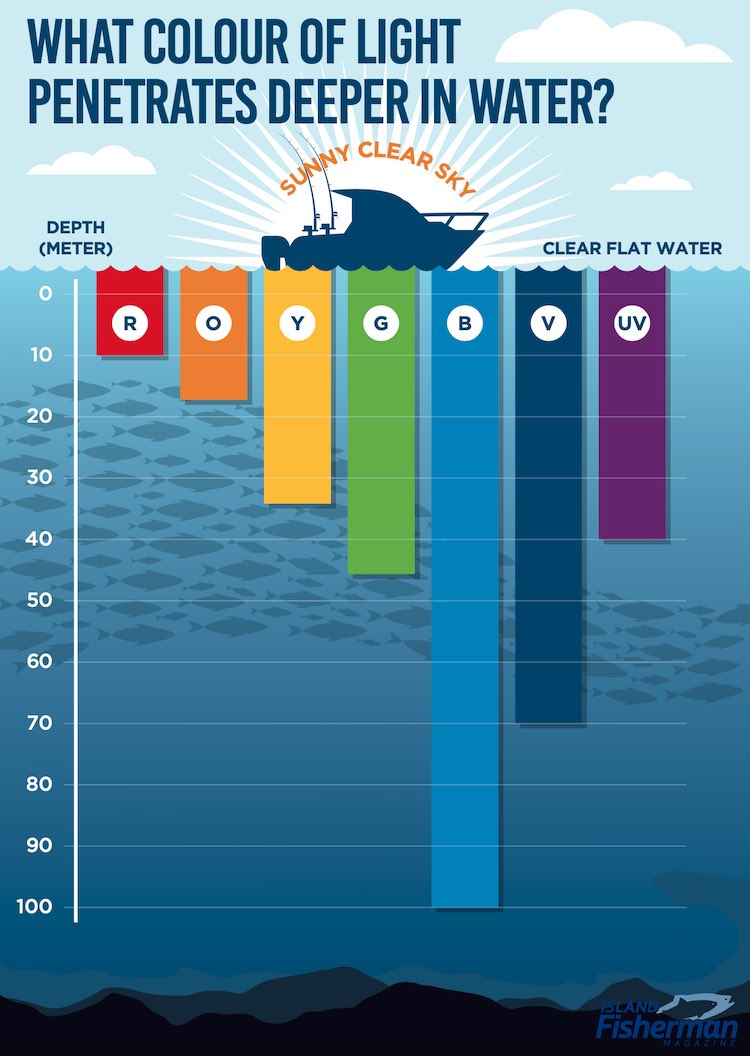Mastering the Art of Lure Colour
In the intricate tapestry of angling, the colour of your lure stands out as a critical factor in achieving fishing success. Beyond the basics of bait and tackle, understanding the impact of lure colour in different conditions can significantly enhance your chances of catchin that elusive trophy catch.
In clear, sunlit waters, the importance of choosing the right lure colour cannot be overstressed. Opting for bright and vibrant hues like chartreuse or orange can replicate the appearance of lively prey, effectively grabbing the attention of fish from a distance. The reflective properties of these colours create a lure that stands out in the clarity of the water, enticing curious fish to strike. This strategy is particularly effective for species that rely on sight to hunt.
Conversely, when faced with overcast skies or murky waters, a shift to darker lure colours such as black or brown can be a game-changer. These tones create a more visible silhouette against the muted backdrop, making it easier for fish to detect and strike. The contrast provided by darker lures is especially advantageous in low-light conditions.
Consideration of the local prey in the area is paramount. Matching your lure color to the prevalent baitfish in the ecosystem can fool the target species into thinking your offering is a natural and appetizing meal. Mimicking the local forage not only increases the chances of attracting fish but also triggers their predatory instincts. Moreover, the depth at which you are fishing introduces another layer of complexity to the lure colour equation. Light penetration diminishes with depth, altering the way colors are perceived underwater. To counter this, selecting lure colours that are visible at various depths is crucial. Bright colours like yellow and red tend to disappear at greater depths, making them poor choices for deep-water fishing. Experimenting with colour variations and observing how they appear at different depths can provide invaluable insights into the preferences of the fish in that specific environment.
Moreover, the depth at which you are fishing introduces another layer of complexity to the lure colour equation. Light penetration diminishes with depth, altering the way colors are perceived underwater. To counter this, selecting lure colours that are visible at various depths is crucial. Bright colours like yellow and red tend to disappear at greater depths, making them poor choices for deep-water fishing. Experimenting with colour variations and observing how they appear at different depths can provide invaluable insights into the preferences of the fish in that specific environment.
Time of day is another critical variable influencing the effectiveness of lure colour. As the sun changes its position in the sky, the angle and intensity of light can impact how fish perceive colours. In the early morning or late evening, when the sun is low on the horizon, using warm-coloured lures like orange or gold can mimic the hues of a sunrise or sunset, potentially triggering feeding behavior.
Adaptability is the hallmark of a successful angler. A willingness to experiment with various lure colours based on weather conditions, water clarity, and the time of day can be the key to unlocking a successful day on the water. Observing the responses of different species to specific colours in a given setting allows for the development of a personalised approach that increases your chances of a memorable catch.
The importance of lure colour cannot be overstated in the world of fishing. The art lies in recognising the dynamic interplay of environmental factors and adjusting your approach accordingly. By understanding how lure colour influences fish behaviour in different conditions, anglers can elevate their skills and turn an ordinary day of fishing into an extraordinary adventure.

In clear, sunlit waters, the importance of choosing the right lure colour cannot be overstressed. Opting for bright and vibrant hues like chartreuse or orange can replicate the appearance of lively prey, effectively grabbing the attention of fish from a distance. The reflective properties of these colours create a lure that stands out in the clarity of the water, enticing curious fish to strike. This strategy is particularly effective for species that rely on sight to hunt.
Conversely, when faced with overcast skies or murky waters, a shift to darker lure colours such as black or brown can be a game-changer. These tones create a more visible silhouette against the muted backdrop, making it easier for fish to detect and strike. The contrast provided by darker lures is especially advantageous in low-light conditions.
Consideration of the local prey in the area is paramount. Matching your lure color to the prevalent baitfish in the ecosystem can fool the target species into thinking your offering is a natural and appetizing meal. Mimicking the local forage not only increases the chances of attracting fish but also triggers their predatory instincts.

Time of day is another critical variable influencing the effectiveness of lure colour. As the sun changes its position in the sky, the angle and intensity of light can impact how fish perceive colours. In the early morning or late evening, when the sun is low on the horizon, using warm-coloured lures like orange or gold can mimic the hues of a sunrise or sunset, potentially triggering feeding behavior.
Adaptability is the hallmark of a successful angler. A willingness to experiment with various lure colours based on weather conditions, water clarity, and the time of day can be the key to unlocking a successful day on the water. Observing the responses of different species to specific colours in a given setting allows for the development of a personalised approach that increases your chances of a memorable catch.
The importance of lure colour cannot be overstated in the world of fishing. The art lies in recognising the dynamic interplay of environmental factors and adjusting your approach accordingly. By understanding how lure colour influences fish behaviour in different conditions, anglers can elevate their skills and turn an ordinary day of fishing into an extraordinary adventure.
